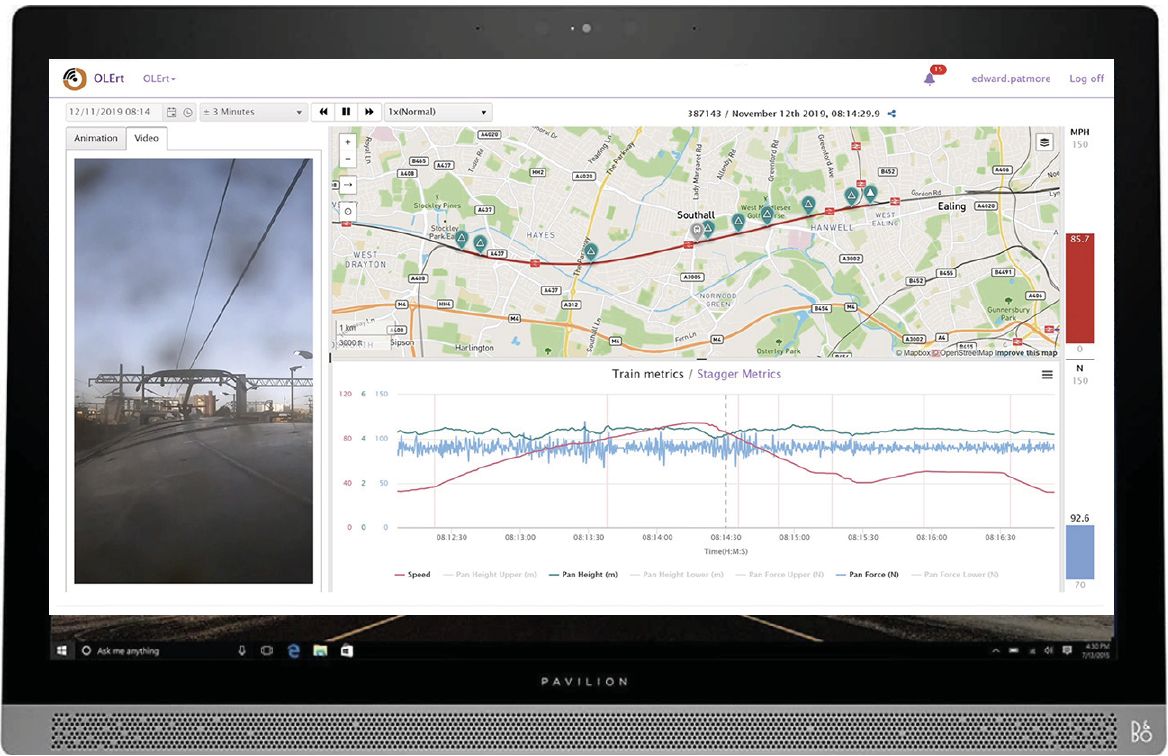OLErt Case Study: Stagger Exceedance
A real issue for the rail industry, stagger exceedance (which is the longitudinal alignment of overhead lines) occurs when overhead wires run outside the normal contact area of the pantograph, increasing wear and tear on the wire.
Should this continue to move towards the outside (or is blown there by the wind), there is an increased risk of dewirement from the pantograph ‘hooking over’ the overhead line and impacting rail services. Innovation and technology comes to the fore when resolving such issues, which we will explore further in this case study.
Background
The overhead line near Hanwell delivers electricity for the busy rail network transporting trains from London out towards Reading, a key commuter route on Great Western Railway’s (GWR’s) network. The Network Rail Mentor system (NR’s overhead line test train) had run in the area the week before and detected several potential faults. The wire was found to be exceeding stagger, which would only worsen if left unattended and could potentially result in huge disruption and significant delays.
 Harnessing OLErt
Harnessing OLErt
OLErt (Overhead Line Equipment in real-time) aims to provide an innovative, low-cost technology solution that will dramatically reduce the incidence of failures to electrified infrastructure and fleets through continuous and dynamic computer vision monitoring and alerting on service trains.
A tried and tested system, OLErt has been adopted across the industry to tackle a wide range of issues, including the stagger incident at Hanwell. Created with efficiency in mind, the OLErt system was deployed on the same route immediately following the receipt of the Mentor’s data regarding the incident that occurred at Hanwell. Within one week, the OLErt system was able to use its on-train forward facing camera, combined with its location tracking device to establish the faults and confirm the actions that were needed to be taken to rectify the problem, in advance of any incidents occurring.
Thanks to OLErt’s ground-breaking GPS capabilities, the exact location of the exceedance was easily identified, enabling a maintenance team to be deployed to the specific point of fault. This not only meant that rectifying the fault was easy to locate and therefore fix, but that the risk of a complete dewirement was avoided.
The value of OLErt
In this case, the deployment of OLErt allowed follow up monitoring of the potential issue straight away, following the running of Mentor on the route. As NR’s Mentor train only runs once every year, the use of OLErt on service trains operating the route meant that further monitoring of the situation could be completed straightaway. Not only does this allow for immediate confirmation of faults, but thanks to OLErt’s in-built GPS capabilities, more precise data could be supplied to the maintenance to team to rectify the fault much more efficiently and any potential further impacts across the route, were averted.
MORE INFO ABOUT OLErt